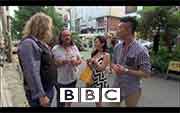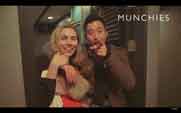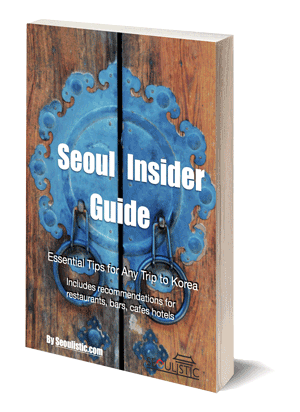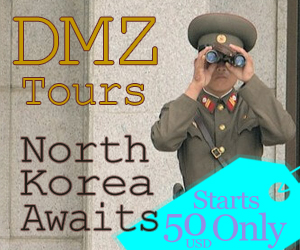.
Introduction: About City Hall/ Gwanghwamun, Seoul
With Korea’s top attractions located in this vicinity, you could expect the City Hall and Gwanghwamun areas to be crowded with tourists–and in a way you would be right.
However, take a look at all the hidden pockets of this neighborhood and you’ll notice that City Hall and Gwanghwamun are both popular and meaningful for locals as well. With a different atmosphere every season, what’s happening in Gwanghwamun and City is almost equivocal to examining what’s going on in Korea at the moment. Case in point during the past few years are televised World Cup games, the internationally recognized political protests as well as memorials in honor of the victims of the 2014 Sewol Ferry tragedy. Locals gather here to despair together in times of injustice and celebrate the largest festivals here as well.
Here, there are quiet walks to be found and independent films to be seen in addition some of the consistently delicious Korean food. With many embassies, corporations and ministries holding their main offices in this area, the restaurants fill up at mealtimes with suited-up men and women dining with their colleagues and customers–there’s hardly a bad meal around here to be had.
Don’t just open up the front page of the local paper–come live it!
.
How to get to City Hall, Seoul
a) How to get to City Hall, Seoul from Incheon International Airport (or Gimpo Airport)
- SubwayTake the AREX to the last stop, Seoul Station and transfer to Line 1 one stop away at City Hall Station. (1hour 10min)
- Airport Buses No 6701, 6015, 6702
- Depending on traffic and tolls, your bill will come out to approximately 60,000 won. (1 hour)
Subway Stations
City Hall Station, Line 2 (Green)
City Hall Station, Line 1 (Dark Blue)
- Exit 2 & 3 : Both of these exits will lead you straight in front of Deoksugung Palace.
- Exit 4 : This exit will give you a glimpse of Cheonggyecheon Stream before reaching Gwanghwamun.
- Exit 5 :You will be dropped off right in front of Seoul City Hall–a few meters away from the Seoul Metropolitans Library.
- Exit 6 & 7 :These exits will lead you across the street from City Hall and in front of the Plaza Hotel.
- Exit 8 :Walk straight out of Exit 8 for approximately 10 minutes to reach Sungnyemun Gate.
- Exit 9 :An area filled mostly with corporate buildings, this might not neccesarily be the most scenic route to take to your destination.
- Exit 10 :A sharp right after you exit this station will lead you towards the Seoul Museum of Art.
Popular Buses : 603, 602, 172, 472, 700
How to get to Gwanghwamun, Seoul from Incheon International Airport (or Gimpo Airport)
- SubwayTake the AREX to Gongdeok Station and transfer to Line 5 for Gwanghwamun Station. (1hour)
- Airport BusesNo 6701, 6002
- TaxiDepending on traffic and tolls, your bill will come out to approximately 60,000 won. (1 hour)
Subway Stations
Gwanghwamun Station, Line 5 (Purple)
- Exit 1 :Walk of Exit 1 or 8, and you’ll be led to the back of the Sejong Center. In this direction, there are several ministries.
- Exit 2 : These Exits will you lead you towards the Cheongdam Fashion Street. For sightseeing purposes, you might want to stick to these two exits.
- Exit 3 :Leaving Exit 3, you will notice the Kyobo Bookstore–one of the largest bookstores in Korea.
- Exit 4 :At Exit 4, you will be standing east of the Statue of Yi Soon-shin.
- Exit 5 :The Ilmin Museum is directly outside of Exit 5.
- Exit 6 :Walk straight out of Exit 6 and you will be at the Koreana Hotel.
- Exit 7 :A variety of chain stores will greet you outside of Exit 7–an Olive Young, a Starbucks Coffee and a Godiva store.
- Exit 8 :Leaving Exit 3, you will notice the Kyobo Bookstore–one of the largest bookstores in Korea.
- Exit 9 :Directly outside of Exit 9, you will be presented in the plaza, between the statue of General Yi Soon-shin and King Sejong.
Popular Buses : 103, 150, 401, 402, 406, 700, 704, 707, 1711, 7016, 7018, 7022, 7212
Tip : During the weekends, it is highly likely that an event such a protest, a marathon or festival has changed the bus routes for this area. If you are staying at a hotel near here, make sure to be extra cautious of such a situation and avoid taking a taxi if possible. Cab drivers may even refuse to go through these streets during high traffic. Additionally, these subways can fill up tremendously.
.
Best Places to Stay in City Hall/Gwanghwamun
This prime location is central to nearly every major attraction in Seoul (many even in walking distance). There are 5 different subway lines that service the area, and a plethora of buses. On top of that, the hotels in the Gwanghwamun area are some of the best places to stay in the entire city.

The Plaza Seoul Price : $ 150

The Plaza Hotel is a recently renovated hotel is right in front of Seoul’s City Hall. The interior is sleek and sexy, and there are all the amenities of any 5 star hotel, with pool overlooking the city and gym. There’s even a great view of Deoksugung Palace and City Hall from some of the windows. It’s only a 2 minute walk away from City Hall Station (Line 1, 2), and it’s also walkable to many of Seoul’s most famous attractions, including Gyeongbokgung Palace, Deoksugung Palace, City Hall, Cheonggyecheon Stream, Insadong, Myeongdong, Namdaemun Market, etc. This hotel is located right in the heart of the city.
- Best for Couples/Families/Business
- Overlooking City Hall
- Central Location
- 5-star Hotel
Shinshin Hotel Price : $ 82
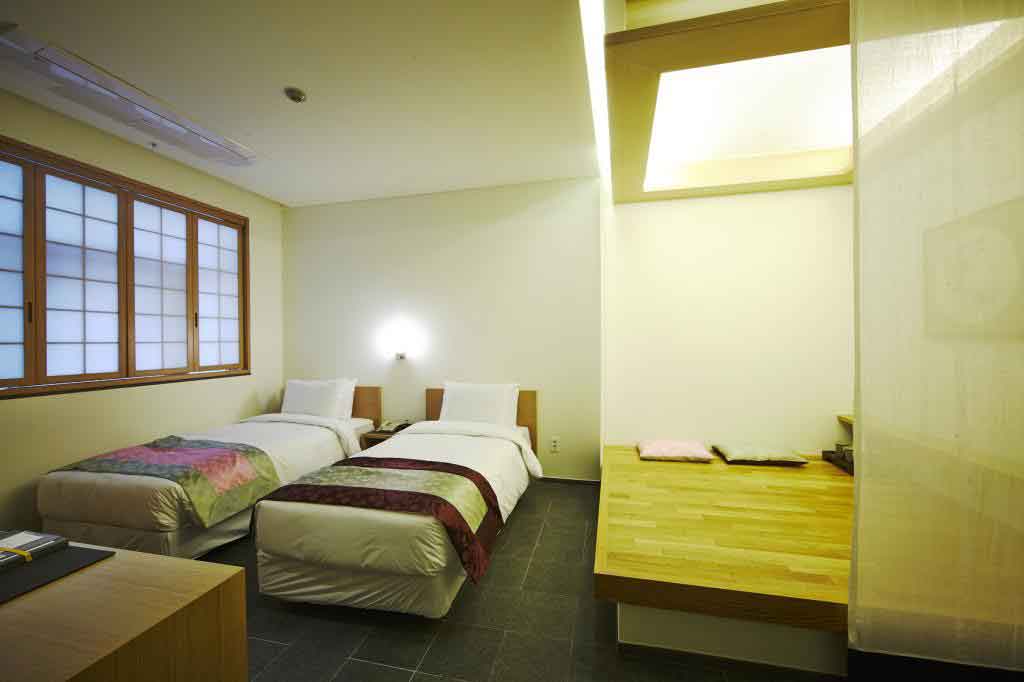
One of the city’s best-kept secrets of Seoul, Hotel Shin Shin opened in 2013 and has led the trend in Seoul’s boutique hotel revolution. Located slightly further away from central Gwanghwamun and City Hall, this Seoul boutique hotel is less likely to be affected by sounds of festivals or protests–but close enough to walk to them in under ten minutes. The popular Seoul hotel mixes in Korean design subtly into their décor and has a uniquely modern twist that’s different from other hotels that are wholly Korean in theme as well as Western hotel brands.
- Best for couples/ friends/ solo travellers
- Boutique hotel
- Beautiful interior
- Quiet neighborhood
Nagne Guesthouse (Boutique Hanok) Price : $ 87
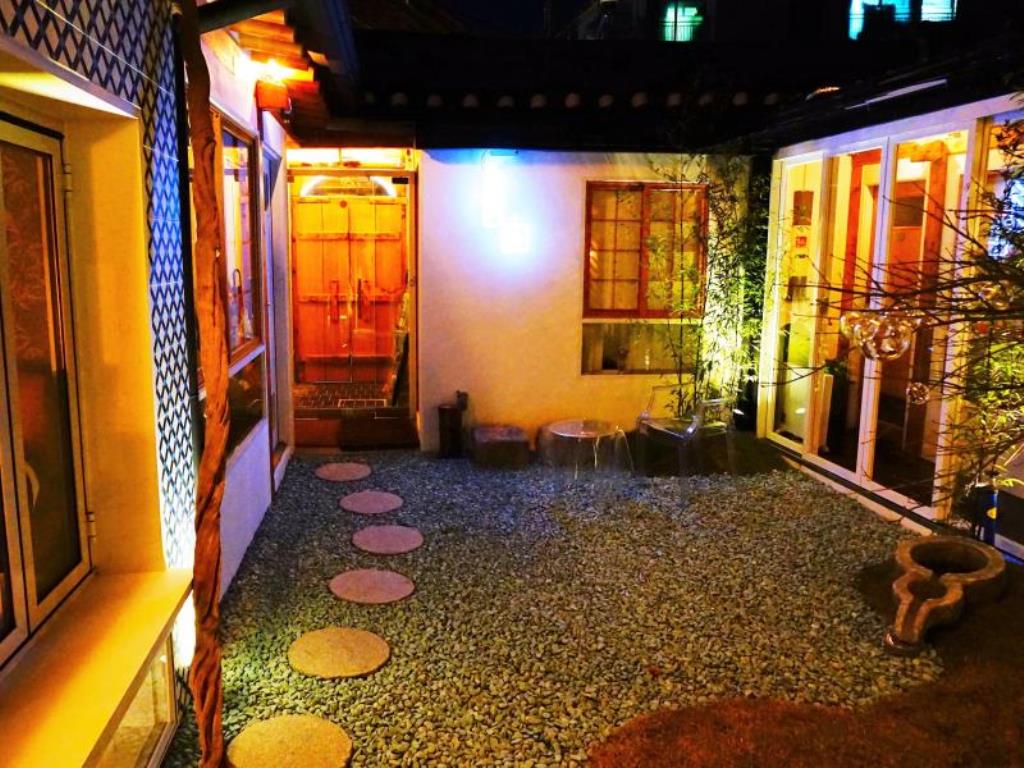
Walk into Nagne Guesthouse and the first thing you’ll notice is the beautiful garden in the madang (courtyard) of the hanok. An employee of the guesthouse will show you around a small kitchen available for use and you’ll be led to one of the guesthouse’s eight rooms. In spite of the small rooms typical of hanok guesthouses, the guesthouse is elegant and clean. It’s a great choice when traveling with quiet friends for a contemplative journey around the city.
- Best for friends/solo travellers
- Hanok guesthouse
- Beautiful interior
24 Guesthouse Seoul City Hall Price : $ 44
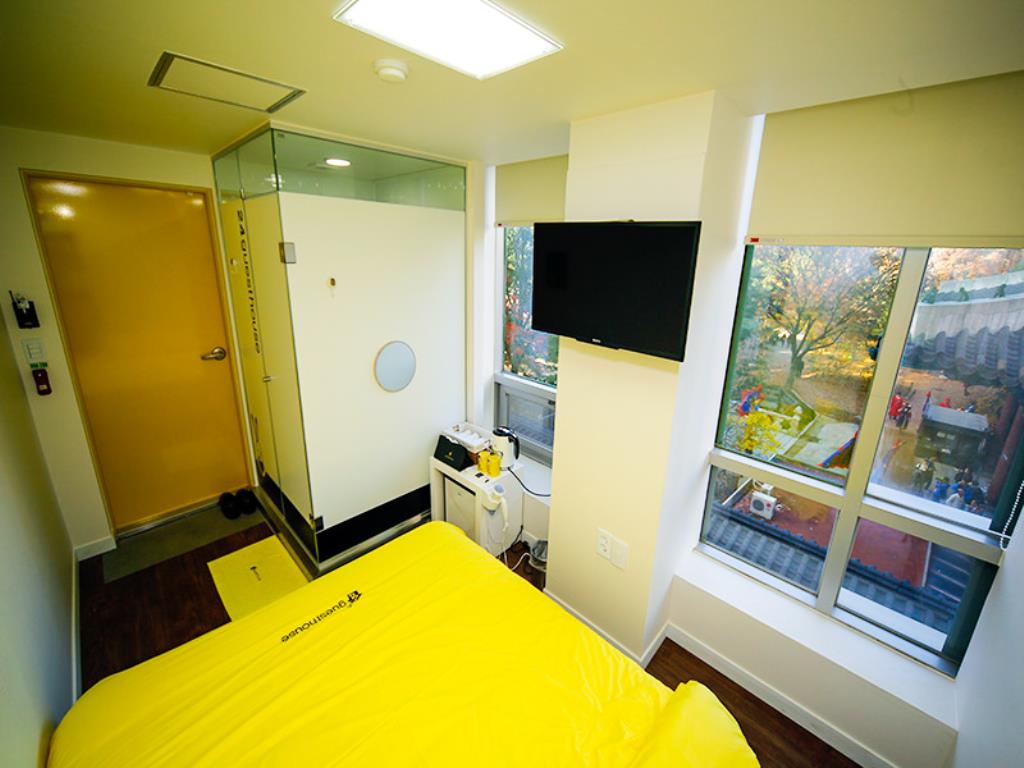
As 24 Guesthouse is a well-known chain of guesthouses in Seoul with their most expensive room costing less than 70,000 won on average nights, it’s a great value for the price. Although there is a fair amount of socializing that happens here, it may not be as interactive as other guesthouses loved by backpackers. The location is right in the middle of the city, with easy walkable access to most of Seoul’s main tourist attractions in Gwanghwamun, Myeongdong and Namdaemun Market. It’s a 2 minute walk to City Hall Station where you have two subway lines at your disposal as well.
- Best for friends/solo travellers
- Central location
- Loved by backpackers
.
Best Places to Eat in City Hall/ Gwanghwamun
Would it be more accurate to say that there are so many good restaurants in this area that it’s difficult to choose or that the general quality of the food here is much higher? The answer, in this case, is both¬–especially when we’re talking about Korean food. Likely due to the influx of customers, the same chain restaurants that exist all over the country generally have fresher, better prepared food at the Gwanghwamun branch. Lunch and dinner are extremely busy times as many office workers in the area are coming out for a bite to eat. Be cautious of walking into random restaurants like you might easily do in other parts of Gangbuk, because you might reach incredibly high prices for traditional Korean set meals. It’s difficult to go to a terrible restaurant in these parts, but follow our list and go to some of the best instead.

Tosokchon Samgyetang

(토속촌 삼계탕) During peak vacation, tourist buses from China and Japan park at the official Tosokchon Samgyetang parking lot across the street bringing a deluge of hungry visitors into the restaurant. Internationally recognized, Tosokchon is undoubtedly one of the most famous restaurants in Korea and is also most often rated as the best restaurant in Seoul. Serving up ginseng chicken soup or samgyetang, the chicken is one of the juiciest, most flavorful in the city and does not overwhelm you with a medicinal aftertaste that other restaurants can have. ㅖPacked with pine nuts, jujubes, glutenous rice and served with a shot of ginseng alcohol, this meal is designed to heat your body up and to protect you from the cold outside. This famous samgyetang restaurant in Seoul also offers several varieties of chicken soup, with the most expensive including black chickens as well as wild ginseng roots harvested in the mountains of Korea. The restaurant’s traditional ambiance, and the quality and consistency of the food are some of the reasons this restaurant is widely considered the best samgyetang restaurant in Seoul.
- Address : 5, Jongno-gu, Jahamun-ro 5-gil, Seoul, South Korea
- Price : ₩16,000 won - 22,000 won
- Phone Number : 02-737-7444
- Subway Station: Gyeongbokgung Station (Line 3)
Nature Kitchen (Jayeon Byeolgok) in Gwanghwamun

(자연별곡) Nature Kitchen is widely considered the best Korean buffet restaurant in Korea with several locations all over the peninsula. However, rumor has it that the Nature Kitchen in Gwanghwamun is the best in Seoul. Lunchtime waits can get up to an hour long for the wholesome dishes that boast being chemical free and devoid of MSG. Favorites include the lean boiled pork or bossam, the bibimbap bar and the do-it yourself patbingsu (shaved ice dessert). At dinner, the price goes up slightly and the dinner menu changes seasonally to include added meat or seafood specials. With coffee and tea included, Nature Kitchen is a great value to please everyone in your group at 13,900 won for lunch on weekdays and 19,900 at dinnertime and weekends. If you’re looking for Korean food in Gwanghwamun, why not all you can eat? Note: This is a chain restaurant with several locations throughout Korea. See their official website for all locations (Korean only).
- Address : 246, Cheongjin-dong, Seoul, South Korea
- Price : ₩Weekday Lunch (before 5PM): 13,900 won
Weekday Dinner (after 5PM), Weekends & Holidays: 19,900 won - Phone Number : 02-2251-8540
- Subway Station: Gwanghwamun Station (Line 5)
- What to order : Buffet
Chowon

(초원) Ask most Koreans where to get traditional Korean porridge, juk, and you’ll most likely be pointed towards the popular juk chain restaurant Bonjuk. But to find a juk (porridge) restaurant that goes above and beyond is difficult. But there’s a little known hole-in-the-wall secret that does just that. Tucked away in the Gwanghwamun area, the juk served at Chowon comes with a yellow egg yolk in the center and several side dishes. With prices slightly cheaper than your average porridge restaurant it’s a really good find for those that need an easy-to-digest meal or need to warm up from the cold. The store’s ginger chicken porridge (samgye-juk) is especially delicious if you’re looking to get that embers in your system warmed up!
- Address : 13, Saemunan-ro 5-gil, Seoul, South Korea
- Price : ₩9,000 won - 12,000 won
- Phone Number : 02-735-5904
- Subway Station: Gwanghwamun Station (Line 5)
Ilpum Dang

(일품당) Before going to Ilpum Dang, one should remember a very important detail–to bring a friend who will order something different from what you’re getting. A restaurant that specializes in shabu shabu and sukiyaki, it’s not just the upscale interior and the top-notch service that makes this place stand out from the others–it’s the food. While the servings are slightly smaller (and the prices are higher) than other shabu-shabu places you’ve in the past, the restaurant is light on the grease and brings out fresh, quality ingredients especially important in a flavor-teasing dish such as this. Hanwoo beef (Korea’s version of wagyu) as well as cattle is used in the meat dishes and there are seasonal specialties such as the Webfoot Octopus Shabu-Shabu. Private dining is also available.
- Address : 25, Jongno-gu, Sejong-daero 23-gil, Seoul, South Korea
- Price : ₩20,000 won - 60,000 won
- Phone Number : 02-733-4949
- Subway Station: Gwanghwamun Station (Line 5)
Eco Bapsang

(에코밥상) Proclaiming themselves as “organically prepared Korean recipe,” a superficial look at Eco Bapsang might have you passing off the restaurant as an ordinary Korean food joint. But there’s a reason it’s boggling with customers. Indeed, the food at Eco Bapsang is quite memorable–wholesome, fresh and well-proportioned. Although it’s slightly more expensive than other restaurants, it’s worth it when you consider the extra time and effort spent on the dishes. Yes, 13,000 is pricey for doenjang-jjiggae (fermented bean stew) but is it too much for the best doenjang-jjiggae you’ve ever had?
- Address : 127-14, Jongno-gu, Sajik-ro, Seoul, South Korea
- Price : ₩13,000 won - 38,000 won (communal dishes)
- Phone Number : 02-736-9136
- Subway Station: Gyeongbokgung Station (Line 3)
No Name Restaurant (Mumyeong Sikdang)

(무명식당) You might not realize how heavily many Korean restaurants season their food until you try the dishes at Moomyung Bapsang. Serving reasonably proportioned dishes, you’ll likely get a bit of meat, rice and vegetables with every order. The makgeolli is often noted for its unique flavor (there’s even a ginger, medicinal flavor) and the best of each region is brought to the restaurant and realized into its side dishes. This is a great place to eat if you’re looking for a place to eat healthy Korean food.
- Address : 119-1, Cheongjin-dong, Seoul, South Korea
- Price : ₩10,000 won - 15,000 won
- Phone Number : 02-2158-7917
- Subway Station: Jonggak Station (Line 1)
.
Things to do in City Hall/ Gwanghwamun
When visiting the City Hall/ Gwanghwamun area, it’s easy to get caught up in the whirlwind of things to do and places to pose for photos. From the palaces to the museums and all the nooks and crannies in between: try not to get lost in crossing off the checkpoints of each place and take time to luxuriously stroll through some of the quieter streets. Get a Seoul City bicycle and check out the Deoksugung-gil, sit down and people watch at the steps in front of the General Yi Soon-shin Statue¬–even jump through the sprinklers if it’s warm out and you’ve got no shame in you. There is certainly a lot to do and a lot to see in this area, make sure to remember it all instead of trying to do it all.
.
Best Bars in City Hall / Gwanghwamun
Charles H.

Located on the basement level of the Four Seasons Hotel, Charles H. has been the talk of the town since speakeasy bars in Seoul became popular. There is no sign to enter but if you can’t find it–you can cheat and ask a hotel staff member. Once inside, you’ll notice the interior of this beautiful speakeasy bar is by far one of Seoul’s fanciest. They also import expert bartenders to serve the best cocktails in Seoul. Since the prices are so steep and the cover charge is above average, you might want to save going to this bar for a special occasion. Once you get your hands on one, you’ll know why Charles H. is widely considered one of the best bars in Seoul.
- Address : 29, Dangju-dong, Seoul, South Korea
- Price : ₩27,000 - 35,000 won (per cocktail)
- Phone Number : 02-6388-5000
- Subway Station: Gwanghwamun Station (Line 5)
Cobbler
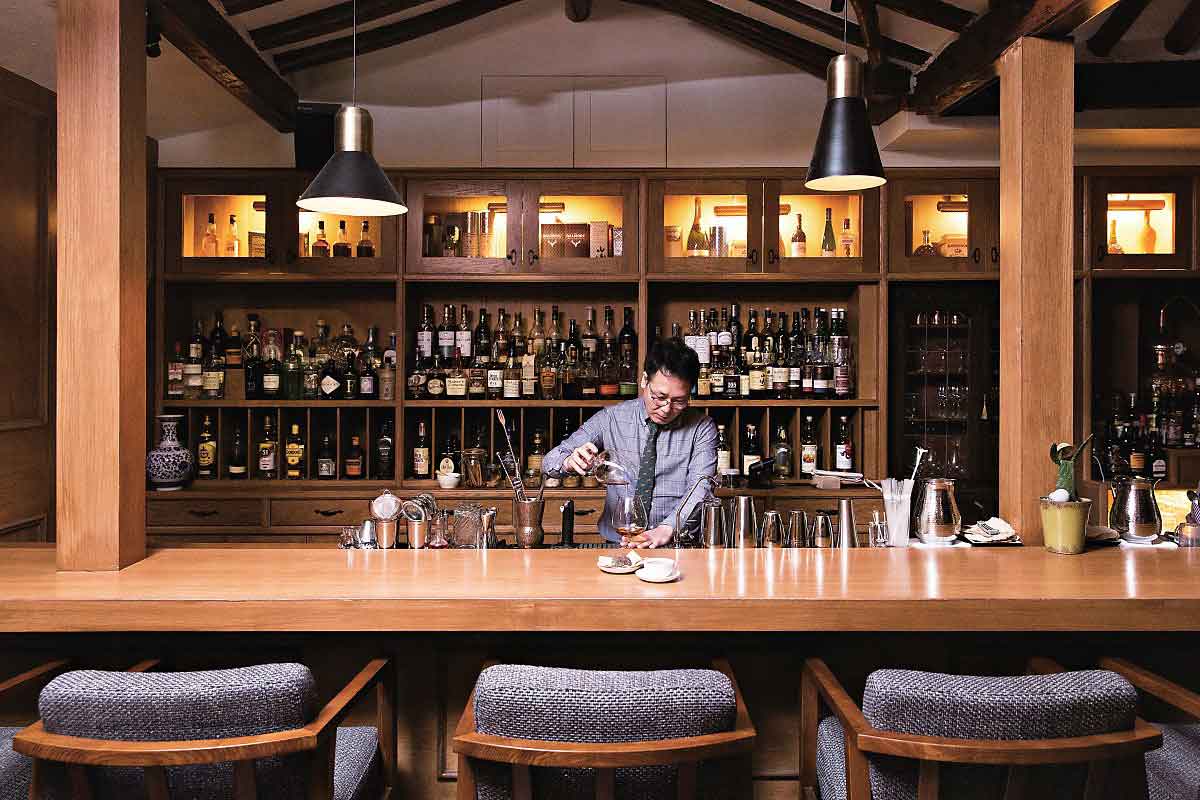
The Cobbler is perfect for an ultimately unique bar you can’t find elsewhere in the world. This high-class whisky and cocktail bar in the middle of Seoul located inside a hanok (traditional Korean home); there’s limited seating with a few seats available at the bar as well as a few tables. Sit with the owner/bartenders if you can for good conversation and for your viewing pleasure. The vintage furniture in combination with the hanok roof is a sight to behold. It’s not very well-known at this point, but if you want to go to one of Seoul’s hidden bars tucked away in back alleys of Seoul, this is one must-go. Note: Close by is another hidden cocktail bar, Seoul Tender Bar.
- Address : 16, Sajik-ro 12-gil, Seoul, South Korea
- Price : ₩18,000-22,000won (per cocktail)
- Phone Number : 02-733-6421
- Subway Station: Gyeongbokgung Station (Line 3)
Seoul Tender Bar

Next to Seoul’s Royal Palace is Seoul Tender Bar, a hidden secret bar that you’ll have to traverse small alleyways to find. Seoul Tender Bar was inspired by a Japanese bar of the same name, and is now one of the hottest little known bars in Seoul. Nestled in a back alley full of hanok (traditional Korean architecture), Seoul Tender Bar is in its own cozy and reinvented space of old. The bartenders are veteran mixologists of Seoul who serve delicious cocktails with snacks in fine porcelain. This amazing bar in the Gwanghwamun area is perfect for a experience unique to Korea after a long day wandering the palaces. Note: Close by is another hidden cocktail bar, Cobbler.
- Address : 17, Sajik-ro 12-gil, Seoul, South Korea
- Price : ₩10,000 won to 20,000 won (per cocktail)
- Phone Number : 02-733-8343
- Subway Station: Gyeongbokgung Station (Line 3)

.
Seasonal Events in Seoul
No matter when you’re visiting Seoul, you’re bound to be visiting at a time when something is going on in the City Hall/ Gwanghwamun area. During the winter, the plaza in front of City Hall lights up with a small white ice skating rink busy with children on the weekends. A water fountain also goes off in both Gwanghwamun and Seoul Plaza every year. When the weather warms up, all different types of markets open up for your people-watching, wallet-emptying needs. Small booths line up in Gwanghwamun Plaza for the Gwanghwamun Square Flea Market where you can find everything from handmade accessories, used clothes and regional specialty foods and behind Sejong Center, there’s a small art market called Sejong Art Market Soso for up and coming artists. If your trip happens to happen in June, you could come show your support at the colorful and controversial Korea Queer Culture Festival. The Street Art festival called the Hi Seoul Festival is the highlight of autumn for many as well is the Seoul Kimchi Making & Sharing Festival, which gathers up the largest amount of kimchi you’ve ever seen in the name of charity and who could forget the Seoul Lantern Festival that happens every November? Most of the events that happen in this area are free, so come indulge in the fun.
.
Best Independent Movie Theaters in Gwanghwamun, Seoul
With many independent cinemas dying out in Seoul, the Gwanghwamun area doesn't have as strong of a connection to this genre anymore. However, film lovers still head to either the EMU Artspace or Cine Cube for screenings of their favorite releases. Cine Cube and Emmaus both screen a good mix of independent domestic films as well as highly acclaimed foreign films. Occasionally, EMU Artspace screens popular Korean titles with English translations–making it particularly golden for K-film lovers.
- EMU Artspace
Address: 7 Gyeonghuigung 1ga-gil, Jongno-gu
Website: facebook.com/emuartspace
Phone Number: 02-720-9815
Map Link: MAP LINK
- Cinecube
Address: 226 Sinmunno 1-ga, Jongno-gu
Website: http://cinecube.co.kr
Phone Number: 02-2002-7770
Map Link: MAP LINK
.
The Royal Places in Seoul
With three of the five main palaces in this area, you could spend an entire day alone trapezing from one palace to another or you could do a bit of reading on each place and see what interests you the most. Here’s our take on the palaces in the City Hall/ Gwanghwamun area.
Gyeongbokgung Palace

(경봉궁) The largest and most popular of the Five Grand Palaces, Gyeongbokgung Palace was built in 1395 during the Joseon Dynasty. However, since much of the Palace was destroyed by fire during the Imjin War, much of what you actually see at the Palace is a restoration that happened during King Gojong’s rule. And what a fine job he did. Gyeongbokgung Palace is certainly most deserving of its “grand” title, and one could easily spend an entire day at the Palace. If you’re not sure which of the 5 Royal Grand Palaces to see Seoul, pick this one. It’s the grandest and most representative of them all. There are also tours available here in English, Japanese and Chinese. Tip: Inside the palace grounds is the National Folk Museum of Korea, which gives a abridged overview on the history of Korea and Korean people throughout the museum. * Free Guided Tours: – English: 11AM, 1:30PM, 3:30PM – Japanese: 10AM, 12:30PM, 2:30PM – Chinese: 10:30AM, 12:30PM, 2PM, 4PM
- Address : 161, Jongno-gu, Sajik-ro, Seoul, South Korea
- Price : ₩3,000 won (Adults)
1,500 won (Age 7-18)
Free (aged 6 and below or 65 and above)
Combination Ticket: 10,000 won admission to all 5 palaces
Free if wearing hanbok (traditional Korean clothes) - Phone Number : 02-3700-3900
- Subway Station: Gyeongbokgung Station (Line 3)
Deoksugung Palace
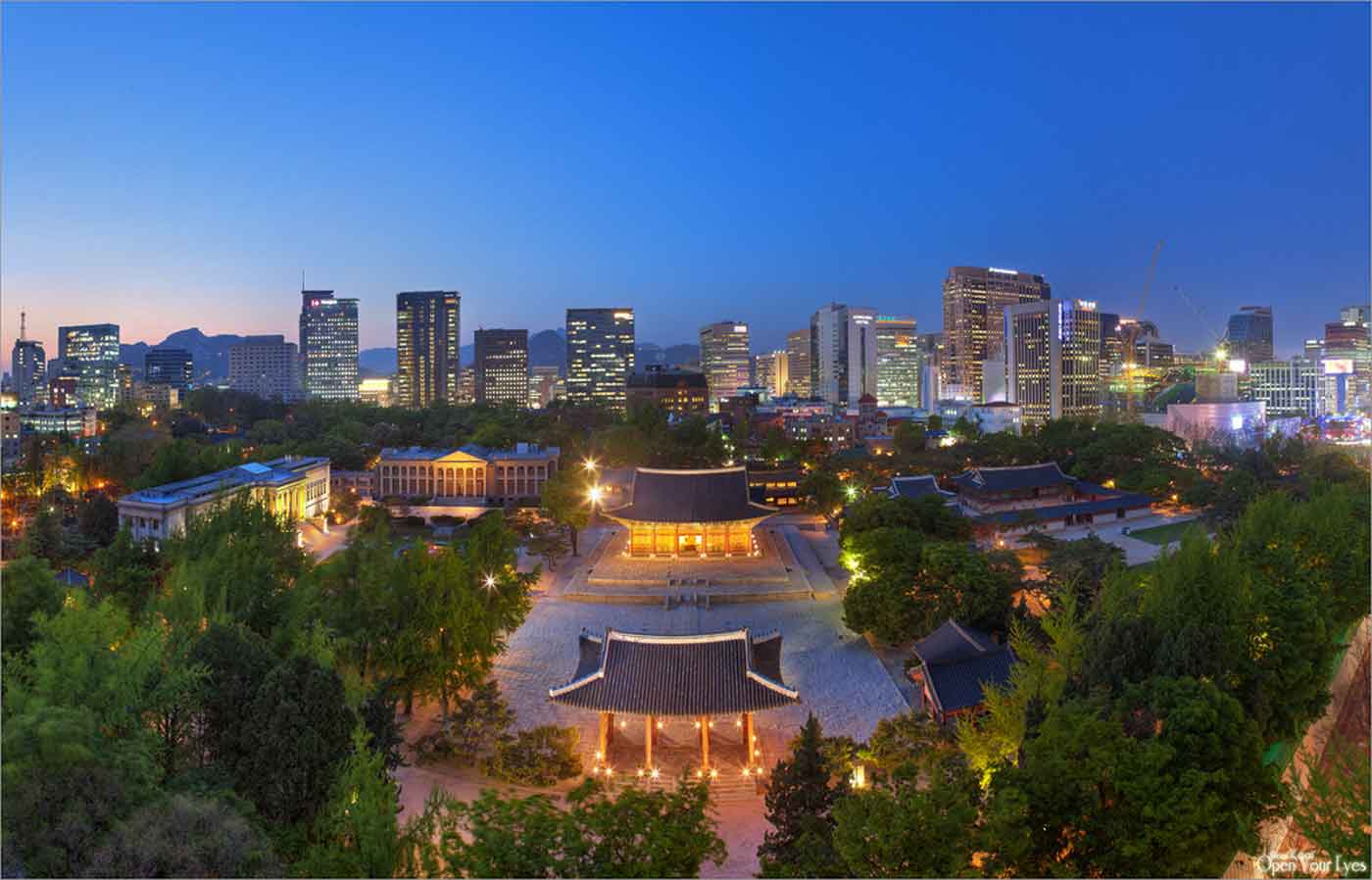
(덕수궁) Deoksugung Palace has an interesting history in that it was originally one of the residences of the royal family, but officially became a royal palace when the other palaces were burned down during the Imjin War. Maybe even more interesting are the Western style buildings that were built on the Deoksugung Palace grounds. One of them is where Emperor Gojong enjoyed drinking his coffee, a first for Korean emperors. One of the great things about Deoksugung Palace is the size of it; it’s the best choice of the five grand palaces of Seoul if you’re short on time. The palace grounds are small and can be perused leisurely in an hour, while some of the other palaces are smaller, Deoksugung Palace is most easily accessible. During the spring, the sight of cherry blossoms in hues of white and pink make the Palace a sight to behold, especially with the tall modern skyscrapers hovering over the palace walls. And the Deoksugung Stone Wall, which is to the left of the main entrance, is a nice leisurely stroll that leads to the Seoul Museum of Art. * Free Guided Tours: – English: (Tue-Sun) 10:30AM, 1:30PM – Chinese: (Tue-Fri) 10AM, 2:30PM, (Sat) 10AM – Japanese: (Tue-Sun) 9:30AM, 4PM
- Address : 99, Sejong-daero, Jung-gu, Seoul, South Korea
- Price : ₩1,000 won (Adults)
500 won (Aged 7-18)
Free (Aged 6 and below or 65 and above)
Combination Ticket: 10,000 won admission to all 5 palaces
*Free if wearing hanbok (traditional Korean clothes) or visiting on last Wednesday of every month. - Phone Number : 02-751-0734
- Subway Station: City Hall Station (Line 1,2)
Gyeonghuigung Palace

(경희궁) Located right beside the Seoul Museum of History, Gyeonghuigung Palace is quite likely the least popular to visit of the royal palaces in Seoul. It may even be considered the forgotten royal palace. It was originally the 2nd residence of the Joseon King and was used in times of emergency. But starting with the Japanese occupation, this royal Korean palace started to be dismantled piece by piece. One of the gates is being used as the front gate of Shilla Hotel, and another gate is at Dongguk University. And now it’s so sparse that it’s possible to walk around here without meeting another person. Something about the emptiness of the place transports you into another time–a feeling quite different from the other palaces. It’s the best royal palace in Seoul to wander leisurely in private with your own thoughts. * Free Audio Guide available in English, Japanese and Chinese. (ID required.)
- Address : 45, Saemunan-ro, Jongno-gu, Seoul, South Korea
- Price : ₩Free
- Phone Number : 02-724-0274
- Subway Station: Gwanghwamun Station (Line 5)
.
Popular Landmarks/ Historical Sites
Much of Seoul’s most iconic imagery comes from the City Hall and Gwanghwamun area. On the main Sejong-daero strip, the Statue of King Sejong and General Yi Soon-shin are two main fixtures easily recognizable as distinctly Seoul. And although less historically relevant, there is also a towering statue of a Hammering Man diagonally across the street from the Seoul Museum of History.
Also noteworthy are the beautiful walking routes one can take while in the City Hall and Gwanghwamun areas. Cheonggyecheon Stream, which starts at Cheonggye Plaza in between City Hall and Gwanghwamun, is one of Korea’s most successful urban renewal projects. Once a heavily-polluted slum, the stream has been marketed as a tourist district where festivals and shows are held. There are even live fish in the streams (albeit artificially put in by the government).
Beside Deoksugung Palace, there is also the stone wall road Doldam-gil (Deoksugung-gil) which turns into Jeongdong-gil as it curves. Lined with trees, Doldam-gil is cursed with the taboo that one should not hold hands there. Said to have had South Korea’s first divorce court, the curse is a silly one but it’s a fun fact to know for the superstitious.
Jeongdong-gil will lead you to Jeongdong Park–an underrated small park near the Norwegian Embassy. Several white gazebos and park benches with few people busy the park during the summer, but otherwise it is relatively empty. You can pick up a roll of kimbap nearby and marvel at the looming large white tower that is the Seoul Former Russian Legation.
As one last note, although shopping in this area is not particularly remarkable, one of Korea’s largest bookstores is located on the basement level of the Gwanghwamun area. Kyobo Bookstores has a wide range of domestic books as well as books in English, French, Chinese, Japanese and German as well as a distinctive reading area.
.
Best Theaters in Gwanghwamun
Traditional Korean music (and dance), classical music performances and musicals are the three types of live performances that dominate the theatre scene here. Those looking for a more varied theatre scene may check out the Daehangno area with a strong reputation for student-run theaters and small independent theaters.
Sejong Center
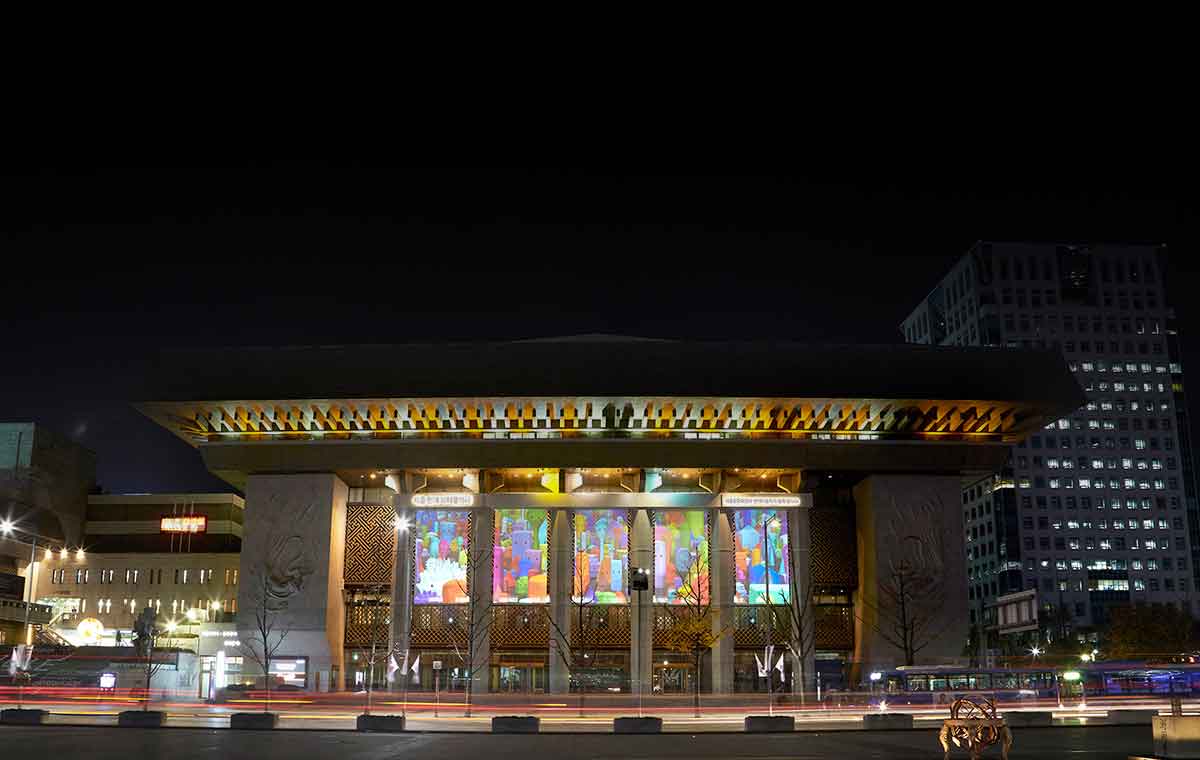
(세종 문화회관) Seoul’s version of New York’s Lincoln Center, the Seojong Center is a multicultural art center housed in a newly renovated building that opened in 2007. The main sections comprise of the Grand Theater, Sejong M Theater, Sejong Chamber Hall and the Exhibition Hall. Here you can find wide range of arts that include solo classical musical performances, orchestral shows, operas, theater productions and traditional Korean dance as well. This is one of the best places to go on a date in Seoul for a classy night out, and is great even if you’re with a friend or flying solo and want to see art and performances in Seoul.
- Address : 175, Jongno-gu, Sejong-daero, Seoul, South Korea
- Price : ₩Vary according to show
- Phone Number : 02-399-1114
- Subway Station: Gwangwahmun Station (Line 5)
Kumho Art Hall

(금호아트홀) A showcase center for classical music, Kumho Art Hall holds performances with headline international acts as well as up and coming domestic artists. Jörg Demus, Heinz Holliger and Chung Myung-hwa are some of the big names to have performed there. If you’re looking for a classy night out in Seoul, put on your evening gown and head to this classical music venue and enjoy a night out of Mozart.
- Address : 75, Saemunan-ro, Seoul, South Korea
- Price : ₩Vary according to show
- Phone Number : 02-6303-1977
- Subway Station: Gwangwahmun Station (Line 5)
Jeongdong Theater
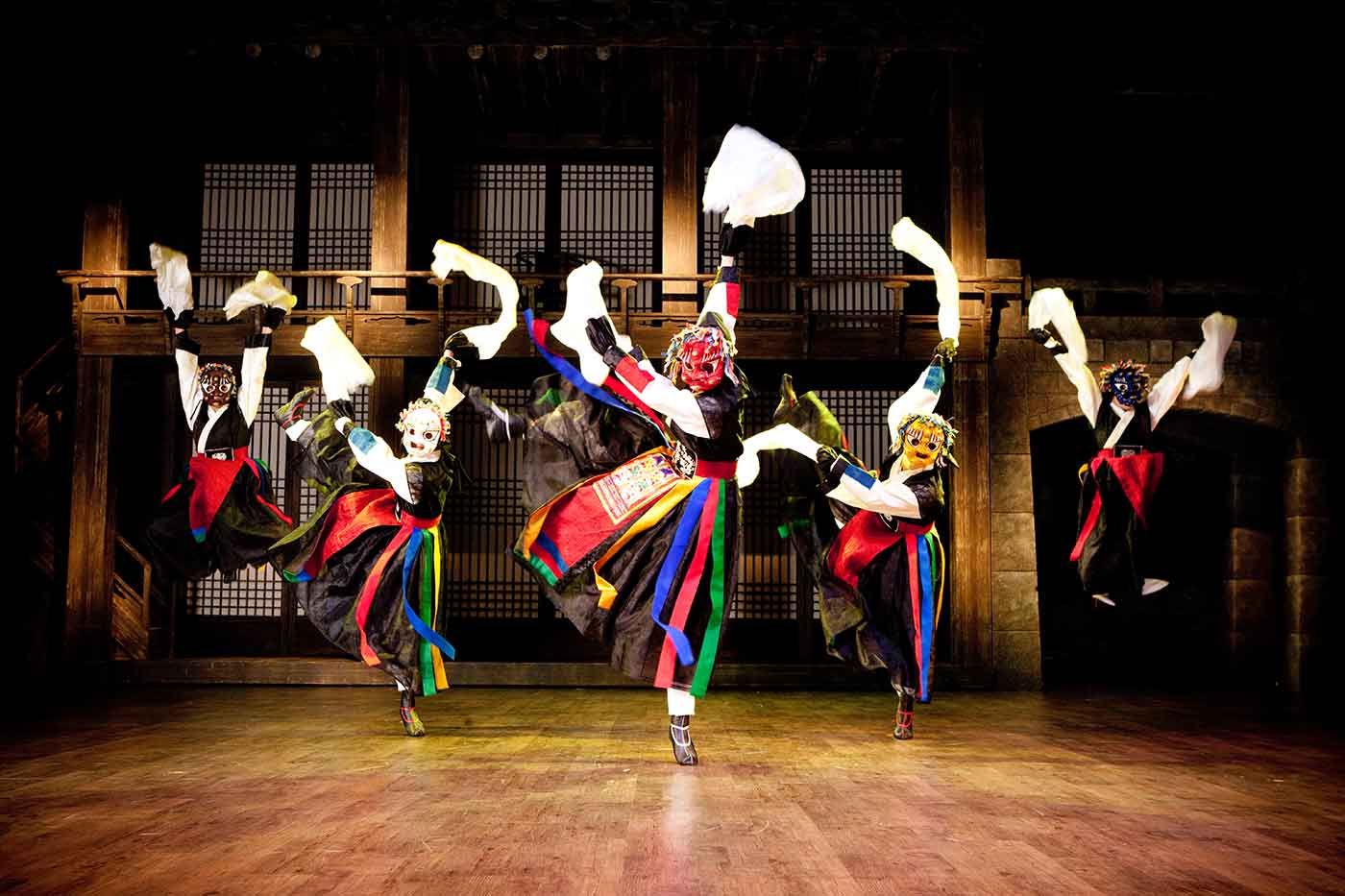
Focusing on traditional performing Korean arts, you’ll be able to see performances of genres such as pansori (storytelling song), Korean folk dances, theatrical plays with historical themes and traditional Korean musical performances. This is one of the best places in Seoul to see traditional Korean cultural performances. Also, the theater is also well-known for its café and restaurant which overlooks a beautiful garden, which you can enjoy before or after the show.
- Address : 43, Jeongdong-gil, Seoul, South Korea
- Price : ₩Tickets start 40,000 won
- Phone Number : 02-751-1500
- Subway Station: Gyeongbokgung Station (Line 3)
.
Best Museums in Gwanghwamun
The City Hall and Gwanghwamun area is one of best for being able to walk from a varied collection of museums. Here, you can see everything from agriculture, history and contemporary art in one day if you put your mind to it. Another great reason to museum hop? Many of the museum’s permanent collections are reasonably priced or free.
Sejong Center

(세종 문화회관) Seoul’s version of New York’s Lincoln Center, the Seojong Center is a multicultural art center housed in a newly renovated building that opened in 2007. The main sections comprise of the Grand Theater, Sejong M Theater, Sejong Chamber Hall and the Exhibition Hall. Here you can find wide range of arts that include solo classical musical performances, orchestral shows, operas, theater productions and traditional Korean dance as well. This is one of the best places to go on a date in Seoul for a classy night out, and is great even if you’re with a friend or flying solo and want to see art and performances in Seoul.
- Address : 175, Jongno-gu, Sejong-daero, Seoul, South Korea
- Price : ₩Vary according to show
- Phone Number : 02-399-1114
- Subway Station: Gwangwahmun Station (Line 5)
Kumho Art Hall

(금호아트홀) A showcase center for classical music, Kumho Art Hall holds performances with headline international acts as well as up and coming domestic artists. Jörg Demus, Heinz Holliger and Chung Myung-hwa are some of the big names to have performed there. If you’re looking for a classy night out in Seoul, put on your evening gown and head to this classical music venue and enjoy a night out of Mozart.
- Address : 75, Saemunan-ro, Seoul, South Korea
- Price : ₩Vary according to show
- Phone Number : 02-6303-1977
- Subway Station: Gwangwahmun Station (Line 5)
Jeongdong Theater

Focusing on traditional performing Korean arts, you’ll be able to see performances of genres such as pansori (storytelling song), Korean folk dances, theatrical plays with historical themes and traditional Korean musical performances. This is one of the best places in Seoul to see traditional Korean cultural performances. Also, the theater is also well-known for its café and restaurant which overlooks a beautiful garden, which you can enjoy before or after the show.
- Address : 43, Jeongdong-gil, Seoul, South Korea
- Price : ₩Tickets start 40,000 won
- Phone Number : 02-751-1500
- Subway Station: Gyeongbokgung Station (Line 3)
Seoul Museum of Art (SeMA) [City Hall]

Located behind Deoksugung Palace, some of the most popular art exhibitions in Seoul take place at SeMA. Some memorable exhibitions to have taken place there include the Tim Burton exhibition, G-Dragon’s PEACEMINUSONE and the Gauguin exhibition. When trending exhibitions take place, the museum can get extremely crowded and the lines to enter this relatively small 3-story museum can get over an hour long. Try to avoid peak times or arrive early on weekends. Most of the time, if you’re free during business hours when everyone else is in the office, SeMA can be a leisurely stroll to enjoy nice art work.
- Address : 61, Jung-gu, Deoksugung-gil, Seoul, South Korea
- Price : ₩Free (excluding special exhibitions)
- Phone Number : 02-2124-8800
- Subway Station: City Hall Station (Line 1, 2)
Seoul Museum of History

If you know nothing about this great city of Seoul, the Seoul Museum of History is probably the best place to go to. It’ll give you an overview of the history of the city, and show you how this mega metropolis came to be. Opened in 2002, the Seoul Museum of History is a spacious museum where you can learn about Seoul’s history starting from prehistoric times. Artifacts such as clothes, weapons, ceramics and more are located in the museum. Also, there’s a great library for reading and studying on your own. This is one of the best history museums in Seoul.
- Address : 2-1, Sinmunno 2(i)-ga, Seoul, South Korea
- Price : ₩Free
- Phone Number : 02-724-0274
- Subway Station: Gwangwahmun Station (Line 5)
National Folk Museum of Korea
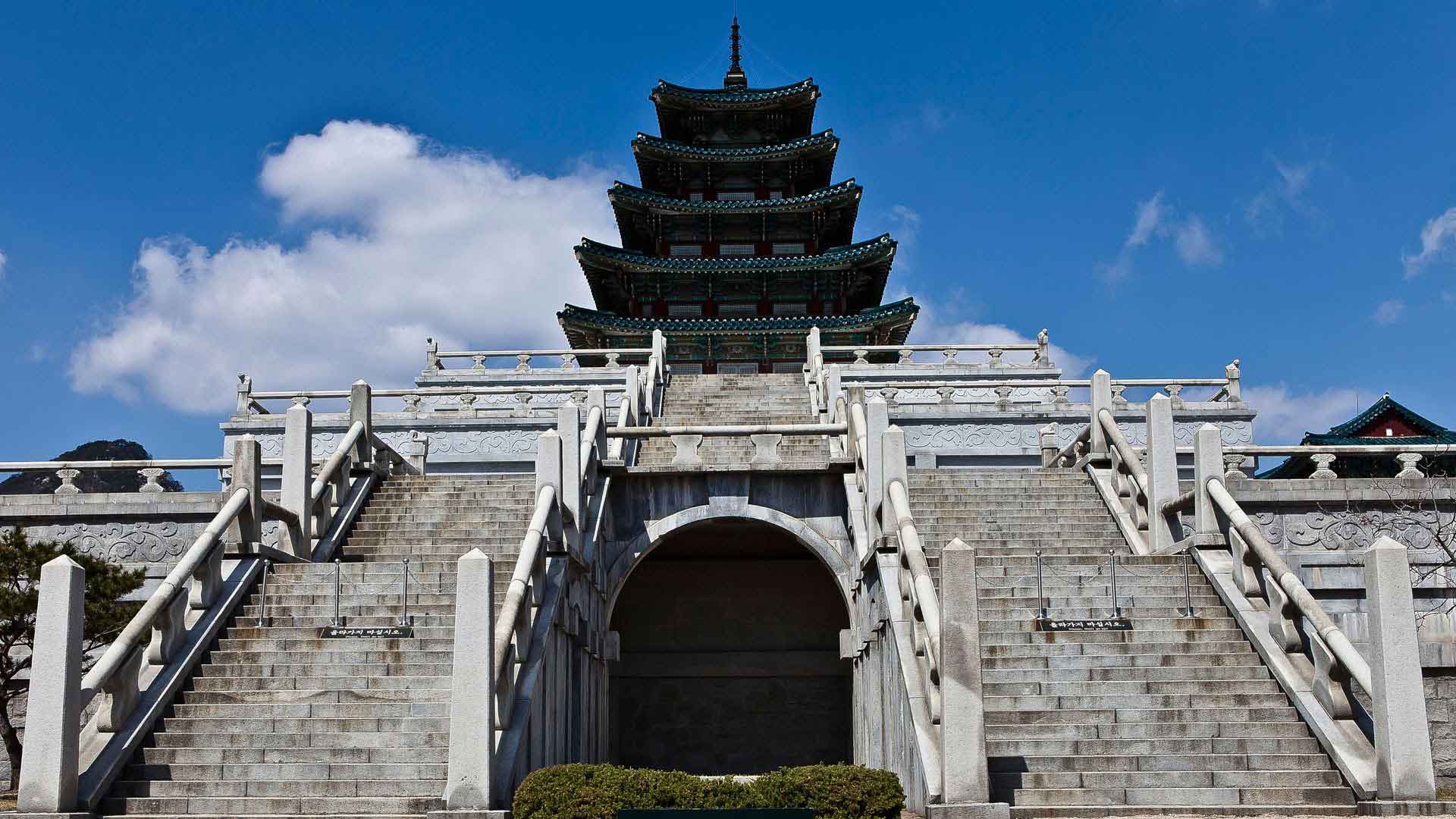
Connected to Gyeongbokgung Palace, the National Folk Museum of Korea gives the visitor an insight into the daily lives of Koreans at different times of history. It has relics and artifacts from ancient Korean times with information on how the folk villagers of Korea became the hyper modern Seoulites of today. It’s a fun museum that takes the visitor back in time to different eras. Case in point is the 70-80s street where you can walk around and see what a Korean school classroom of that period looked like, what a barbershop looked like, etc. The gift shop here is particularly notable for its beautiful prints. Also, if you’re lucky, you may catch the traditional Korean performances they periodically have at the gate.
- Address : 37, Sejongno, Jongno-gu, Samcheong-ro, Seoul, South Korea
- Price : ₩Free
- Phone Number : 02-3704-3114
- Subway Station: Gyeongbokgung Station (Line 3), Anguk Station (Line 3)
National Museum of Korean Contemporary History

Located right across the street from Gyeongbokgung Palace, the National Museum of Korean Contemporary History opened in 2012 and is a relative new addition to all the museums in Gyeongbokgung. This new history museum in Seoul outlines the modern history of Korea from the late 19th Century to now, guiding you through the end of the Joseon Dynasty, the Japanese occupation, the Korean war and the current state of Korea today. After you walk through the museum’s exhibitions, don’t miss the view from the rooftop–the view of Gyeongbokgung palace from there is the best part!
- Address : 198, Jongno-gu, Sejongno, Seoul, South Korea
- Price : ₩Free
- Phone Number : 02-3703-9200
- Subway Station: Gwangwahmun Station (Line 5)
Museum of Modern and Contemporary Art (MMCA) [Deoksugung Palace]
Located inside Deoksugung Palace, this branch of the Museum of Modern and Contemporary Art is a nice place to combine with a trip to Deoksugung Palace. The intimate museum consists of two stories, and the exhibition taking over the museum may change the venue’s mood greatly. Musical and dance performances often take place here as well. It’s a unique opportunity to enjoy a modern and contemporary art museum inside a one of Seoul’s beautiful centuries old Royal Palaces.
- Address : 99, Jung-gu, Sejong-daero, Seoul, South Korea
- Price : ₩Free
- Phone Number : 02-2022-0600
- Subway Station: City Hall Station (Line 1, 2)
Ilmin Museum of Art

At the venue of the former Dong-a Ilbo Newspaper building, the Ilmin Museum of Art was established and run by a non-profit that was founded in honor of the former president of Dong-a Ilbo, Kim Sang-man, whose penname, Ilmin, is the museum’s. The art housed in this art museum is based on the news mogul’s private art collection. Now it mainly focuses on domestic Korean art, some of which date back to the Goryeo Dynasty. It also houses a documentary archive on the 4th floor of the building where you can view high quality documentaries with a reservation.
- Address : 139, Jongno-gu, Sejongno, Seoul, South Korea
- Price : ₩5,000 won (4,000 won students)
- Phone Number : 02-2020-2060
- Subway Station: Gwangwahmun Station (Line 5)



